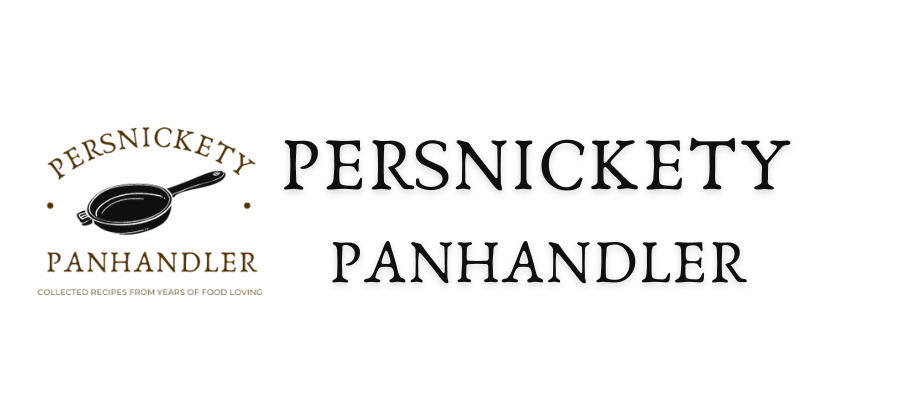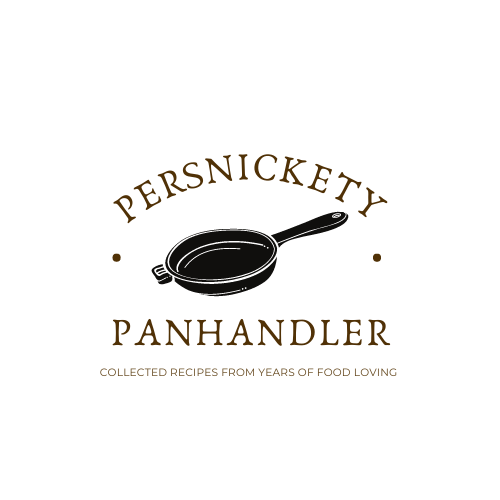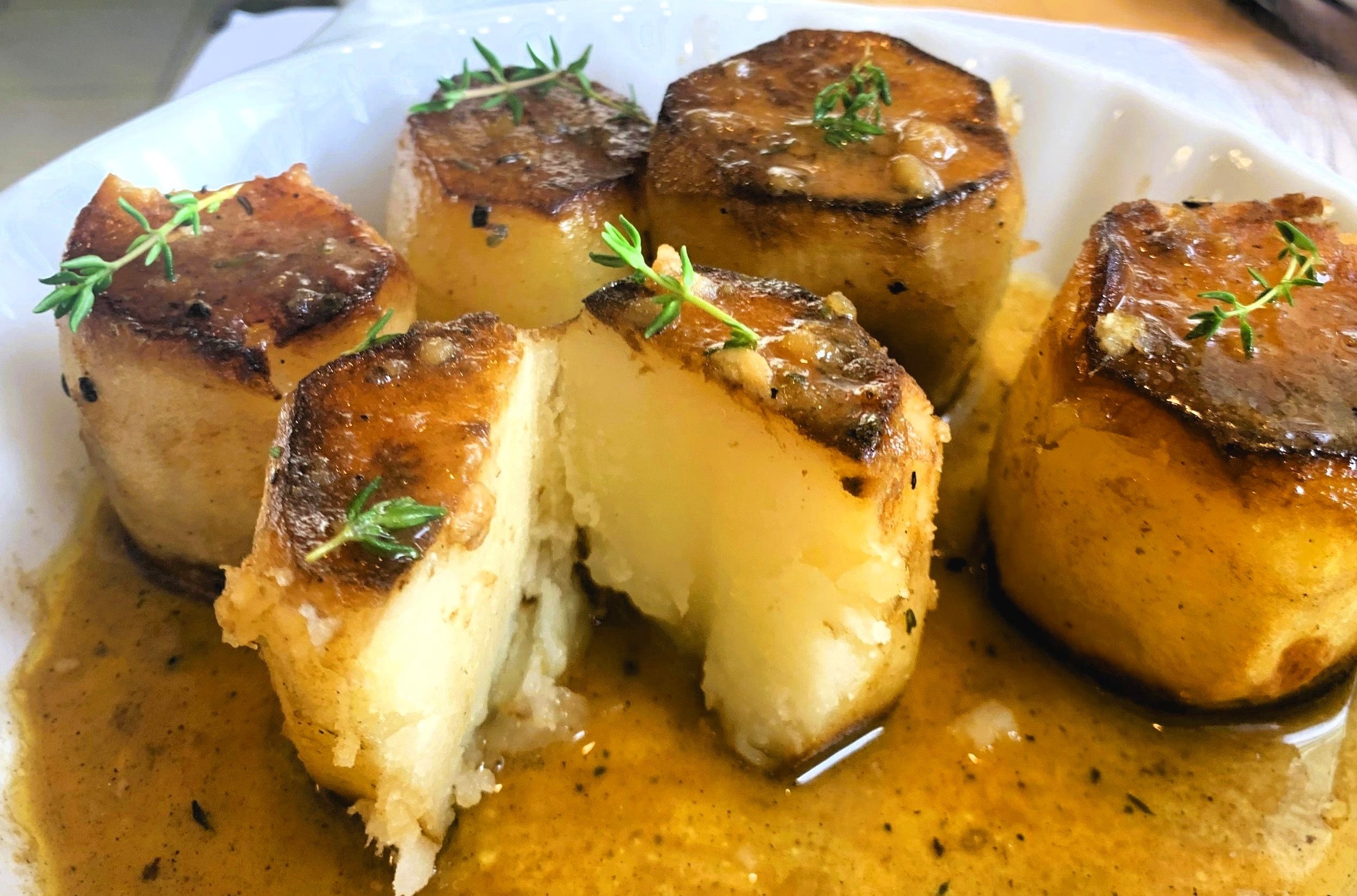French Potato Recipes
The Pomme de terre (“apple of the earth” - potato ) and the French didn’t always see “eye to eye”. In fact, when that lumpy, earthy, root vegetable first immigrated to France from Peru, sometime before the French Revolution, it wasn’t considered appropriate for human consumption, so was fed to the pigs. What, no French fries? Say it isn’t so, but Pommes Frites are thought to have originally been created in Poland. But the French seem happy to accept the acclaim for that universally adored fried indulgence.
The Frenchman that could envision pillowly mounds of mashed potatoes, named Antoine Parmentier, took on the task of coaxing skeptical French palates. Since the potato was forbidden to be cultivated in France, he had to persuade the Paris Faculty of Medicine to declare potatoes edible in 1772, undoubtedly after several samplings of sumptuous Potatoes au Gratin!
Are you picturing French housewives with a skillet in one hand and butter in the other, eager to take on the potato? It wasn’t so. Despite impending famine, the people resisted - the pigs knew better. So Parmentier tried other tactics such as convincing the royal palate. At a dinner hosted in 1785 by Parmentier himself, for which he created potato dishes fit for a king, Louis XV declared, “One day, France will thank you for discovering the bread of the poor people’’.
The political mess of the Revolution (and French cuisine) put the potatoes on the back burner so to speak until in 1793 the new French Government decided to promote the potato, and in 1794, the first cookbook written by Madame Merigot, was all about potato recipes.
Pay homage to Parmentier while you create your next French potato recipe as you enjoy the endless combinations for which the potato supplies a soul-soothing blank canvas, for the artwork of cheese, fish, meats, pastries, fondue, etc. Potatoes have not only become a staple of French cuisine, but a player in a bit of a love affair. The average French citizen eats approximately 100 pounds of potatoes per year, which ranks France only 5th in the world for potato consumption. The rest of use are eating hard to try to keep up!
Potatoes Dauphinois, Tartiflette, Munstiflette, and Fondant potatoes are just a few excellent French potato recipes which are included in this blog. And if the pigs don’t get the potatoes anymore, at least they meet up again in such dishes as Blanquette of Pork. Vive la Pomme de Terre!
Elegant cylinders of tender, buttery potato hearts. Easily made and simply beautiful!
French Fondant Potatoes
4 large, potatoes, peeled (Russet or Yukon Gold recommended)
2 tablespoons vegetable oil
3 tablespoons butter
4 peeled and mashed cloves garlic
2 sprigs of fresh thyme
1 cup hot chicken stock
1 teaspoon salt
1/2 teaspoon freshly ground black pepper
-Preheat the oven to 400 degrees Fahrenheit.
-Peel the potatoes and slice the ends off, so they have flat ends with a good amount of surface area. With a knife or a potato peeler trim the sides, vertically, so that you approximate a cylinder shape about 2 inches high. You should be able to create 2 cylindrical pieces from each large potato. From a smaller potato you can expect to create one 2-inch cylinder.
-Heat the oil in an oven-proof frying pan on high heat until hot. Place the potatoes in the pan, one flat end down and cook for 5-6 minutes, until golden brown. Turn the potatoes over to the other flat end, reduce the heat to medium-high and cook for a further 5-6 minutes, until golden brown.
-Add the butter, garlic and thyme to the pan, stirring together until butter melts and flavors are infused. Baste the potatoes several times with the butter./herb mixture. Remove the garlic to avoid burning it and pour the chicken stock around the potatoes.
-Sprinkle the potatoes with the salt and pepper and place in the oven to cook for 35 - 45 minutes. Check the potatoes after 35 minutes to see if they are tender (insert a sharp knife into one of the potatoes – it should slide in easily). If not done, place back into the the oven for 5-10 minutes. Add a bit more chicken stock if the pan begins to look too dry.
-Once tender, remove potatoes from the oven and let rest for 5 minutes. Serve with sprigs of fresh thyme and a sprinkling of Fleur de Sel, if desired. Makes 8 pieces, about 4 servings.
-Can be made ahead by frying the potatoes on both ends, add the butter, garlic and thyme, baste them, then cool, cover and refrigerate for up to a day. To complete cooking, remove from the fridge, remove the garlic, add the stock, salt and pepper and roast in the oven as per the recipe.
Peel and trim potatoes into 2 inch cylinders.
Fry potatoes in butter, garlic and thyme on each end until golden
Add chicken broth and thyme, then bake until tender, about 45 minutes.
Cut into the center of one for a tender, fluffy and buttery potato experience!
A beautiful potato side dish. It’s a stunner!
French Potatoes Dauphinois
Really, truly, the best potato casserole you've ever eaten! Leave it to the French to take the lowly potato and combine it with their staple recipe ingredients, cream and a nutty-flavored cheese and "Voila!" No one does it better.
However, if I may be so bold, I suggest a slight variation, not necessarily an improvement, just a variation. And apparently I am that bold because below I suggest the addition of caramelized onions and red bell pepper. They add an element of sweetness to the dish, that in my humble non-French opinion, raises it up just a notch higher on the list of most delicious potato dishes! However, if you would never question the culinary genius of the French, leave the onions and red pepper out and let this dish transport you to the street cafes of France. Any Frenchman would be proud at your efforts!
But where we would say "au gratin potatoes", they would say, "No, No, No, Potatoes Dauphinois!" (Princely Potatoes). This side dish is a combination between rustic and elegant, if that is possible (the French must have a word for it) and a dish that can be served to family, or for entertaining and accompanies almost anything one can think of, beautifully. It is rich and terribly satisfying. C'est magnifique!
Prince Potatoes with Cheese Gratinee
3 cloves garlic
2 cups shredded gruyere cheese (or swiss)
1 ½ cup whole milk
salt and freshly ground pepper
2/3 cup heavy cream
½ tsp. freshly grated nutmeg
2 lb. white potatoes
1 medium onion, thinly slivered
1 red pepper, slivered
1 tab. flour
3 tablespoons butter
-Preheat oven to 375 degrees.
-Melt 3 tablespoons butter in a medium saucepan. Saute the onion and red peppers in the butter until softened, 6 - 8 minutes, over medium heat. Peel the garlic and crush in a press or finely mince. Add the garlic and continue to saute 1 minute more. Sprinkle flour over vegetables and stir over heat 1 minute longer. Pour the milk and cream (at room temperature) into the pot and bring to boil over low heat. Stir in nutmeg and salt and pepper to taste.
-Meanwhile, peel the potatoes, wash and pat dry. Using the slicer attachment of a food processor, slice the potatoes very thinly or by hand using a sharp paring knife and slice potatoes thinly. Add to the saucepan and cook for 5 minutes, turning the potatoes frequently but carefully.
-Butter a 10 x 9 inch baking dish. Add half the potatoes and sauce, then sprinkle on half of the cheese. Repeat layers and smooth the surface with a wooden spoon.
-Bake until golden brown, about 50 minutes. Test potatoes with a fork to make sure they are tender. Remove from oven and let rest for 15 - 20 minutes. Serve warm from the baking dish.
-Serves 8 – 10.
French Tartiflette (Cheesey Potato and BACON Bake)
French Tartiflette
2 1/4 pounds Yukon Gold potatoes (about 5 small to medium potatoes)
salt for potato water
3 fresh thyme sprigs or 1 teaspoons powdered thyme
1/4 pound thick-cut bacon, cut into 1/4-inch pieces
1 to 2 tablespoons butter
2 medium yellow onions, thinly sliced
Freshly ground black pepper
salt to taste
dash of ground nutmeg (1/4 teaspoon)
1/2 cup dry white wine
1/2 cup heavy cream or crème fraîche
1 pound Reblochon-style soft-rind cheese (best substitutes: Taleggio, Fontina, Muenster, Gruyere, Brie)
-Peel potatoes and cut into 1/2-inch thick rounds. In a large pot, cover potatoes with cold water. Season generously with salt, add thyme, and bring to a gentle simmer over medium heat. Cook at a bare simmer until potatoes are just tender and can be easily pierced with a paring knife, about 25 minutes. Discard thyme (if using fresh springs) drain potatoes, return to pot, and set aside.
-Adjust oven rack to middle position and preheat oven to 350°F. In a 10-inch cast iron or stainless-steel skillet, heat bacon over medium-high heat until fat begins to render. Lower heat to medium and continue to cook, stirring occasionally, until fat is mostly rendered and bacon is cooked until just barely crisp, about 5 minutes. If there is excessive fat, drain off all but 1/4 cup or if the bacon is lean and didn't release much fat, add 1 to 2 tablespoons butter.
-Add onions, season with salt and pepper, and cook, stirring frequently, until onions have softened but not browned, about 8 minutes. Add white wine and cook, stirring, until wine has almost fully cooked off, 1 to 2 minutes.
-Scrape bacon-onion mixture into pot with potatoes and toss gently to thoroughly combine. Place potato mixture back into cast-iron skillet or into a 3-quart baking dish. Stir in cream or crème fraîche. Cut cheese into roughly 1/2-inch-thick slabs or grated on the largest grater holes. Arrange cheese on top of potatoes, rind side up (if using soft cheese with a rind).
-Set skillet or baking dish on top of a rimmed baking sheet and bake until the cheese is melted and bubbling and golden brown on top, about 40 minutes. Serve, scooping tartiflette from the skillet or baking dish onto individual serving plates. Makes 4 - 6 servings.
Peel and slice potatoes into 1/2 inch thick rounds.
Mix sauted onions and bacon with potatoes, place in skillet and cover with thick cheese slices. Bake until cheese is melted and golden.
Let rest 5 - 10 minutes then spoon out the ooey-gooey cheesy potatoes. An incredibly delicious bite! C’est tres delicieux!
PERSNICKETY NOTES:
**For a variation, Munstiflette, popular in the Alsace region of France, use Munster or Gouda cheese in the potato dish. It is all about Muenster Cheese as the town of Muenster is located in that region. However, the authentic Muenster of Alsace is much stronger and melts differently than its American version. Some suggest Gouda provides a more authentic taste and texture.












